Singapore is essentially a modern megalopolis that has so much to offer. It is one of the most visited destinations in Asia Pacific with 13 million visitors last year.
For Filipinos, Singapore has been a very familiar destination. In fact, a lot of Juans have chosen this small island nation as their first-ever foreign country to visit. So it is no longer a surprise that there is an upward trend in air connectivity to accommodate the increasing demand for Juans to travel to the Lion City.
So if you are a first-time traveler and planning to visit Singapore, it's best to know a few of the basics. Here's our beginner's guide for travelers to this surprising destination.
The City and the Country
Singapore is an island city-state in Southeast Asia. Located at the tip of the Malay Peninsula and the meeting point of sea routes, the island thrived as a trading post for vessels coming from China and the Middle East. By the 19th century, it was established as the British Empire's port of call in the region. The island then quickly grew as a hub and attracted immigrants from around the world.
Today, Singapore is a world-class financial, commercial, and tourism hub. It is a smart city leaving visitors in awe of its innovativeness and state-of-the-art tourism infrastructure.
Travel Requirements
With the institutionalization of visa-free travel between ASEAN countries, Juans can travel to Singapore without visa for stays no longer than 30 days.
However, you must still satisfy the following requirements to be considered for entry into Singapore:
1. Passport valid for at least 6 months
2. Sufficient funds for the length of your stay
3. Confirmed return flight ticket
To know more about the entry requirements to Singapore, visit the Immigration and Checkpoints Authority website.
Time Zone
Singapore Standard Time is eight hours ahead of Greenwich Mean Time (GMT +8). This means that the Philippines and Singapore are in the same time zone. But since Singapore is to the west of the Philippines, they experience later sunrise and sunsets there. Sunrise would usually happen at around 7:00AM while sunset is around 7:00PM.
Currency
The currency in Singapore is the Singapore Dollar (SGD). The paper bills come in denominations of 2, 5, 10, 50, 100, and 1,000. The bills come in different colors and dimensions for easier identification. The Singapore Dollar also has coin denominations of 5, 10, 20, and 50 cents, and 1 dollar.
So where to exchange Peso to Singapore Dollar? Based on experience, we enjoyed better exchange rates in downtown Singapore. However, upon arrival at the airport, you'll need some local cash for transportation from the airport, for food, or for some extras. If you have to exchange money at the airport, exchange the smallest possible amount as airports have the worst exchange rates. We just exchanged PHP1,000 at the airport, enough for us to get an EZ Link Card to use in the train and bus system of Singapore. We later changed the rest of our money at Vivo City Mall.
How to Get There
Singapore Changi Airport is accessible by direct flights from 380 major cities globally. From the Philippines, there are daily direct flights to Singapore from Manila, Cebu, Davao, Clark, and Iloilo. These flights are operated by Philippine Airlines, Singapore Airlines, Cebu Pacific, Jetstar Asia, and Scoot. Flight time takes about 3.5 to 4 hours depending on the airport of origin.
We would usually be on the lookout for flight sales. Savings on flights have a huge impact on the travel budget especially for an expensive city like Singapore.
Tip: You can use a credit card if it provides free travel insurance when booking flights, privileges of earning flight points or miles, or lounge access at the airport.
When to Visit
Singapore is considered a year-round destination as it has fairly consistent weather throughout the year. Months with most rainy days are January, April, May, October, November, and December. These months have at least 15 days when rain or drizzle can be expected. Months with the least rainy days are February, June, and July.
Between May and September, however, Singapore experiences haze from the annual slash and burn fires from Indonesia. The haze can go away quickly if there are changes in wind direction. But to be safe, make sure to check particulate levels if it is within an acceptable threshold. Otherwise, there may be a need to minimize outdoor activities.
Tip: Singapore is know for its high level of humidity. The average relative humidity level in the city go above 80%. So wear simple and comfortable clothing suited to the warm and sticky weather.
Where to Stay
The hotel landscape in Singapore is characterized with a diverse selection of properties and rooms. There are more than 400 hotels comprising up to 65,000 rooms in the city that cater to different needs and preferences of visitors. This means Juans have hundreds of options for places to stay.
On our most recent travel, we stayed at Harbour Ville Hotel. It is a low-key property that offers homey setup and budget-friendly rates. The hotel boasts a good location. It is within close proximity to the Cruise Center, Sentosa Island, and Chinatown, which makes it a perfect jump-off point for exploring top Singapore sights and attractions.
In a previous visit, we stayed at the upscale Equarius Hotel. The hotel boasts of being nestled within the fringe of a forest in Sentosa Island, thus providing guests a luxurious, nature-inspired experience. It is also just a few minutes' walk to Sentosa's numerous attractions including Universal Studios Singapore and SEA Aquarium.
Singapore Electricity
In Singapore, power sockets are type C, G, or M. None of these sockets are used in the Philippines. So Juans need to bring an adapter to plug-in devices like mobile phones.
The standard voltage is 230V and the standard frequency is 50Hz. Many of today's devices such as mobile phone chargers will automatically switch to the network voltage and will work fine. However, always check your device's voltage before traveling as connecting it to the wrong voltage might damage your device.
Getting to the City Centre from Changi
From Changi Airport, there are several transport options to get to downtown Singapore.
The usual option is the MRT. It is cheap, fast, and efficient. There is an MRT station right in the basement of Terminal 2 called the Changi Airport MRT station. It is the easternmost stop of Singapore's extensive subway and train system. It is a short spur line that will link you to the main green line of the MRT system. Depending on the location of your hotel, there may be a need for you to transfer to the other colored lines (red, purple, etc.) in an interchange station. The cost will vary depending on the payment method but it is suggested that you purchase a reloadable EZ link card for discounted fares. Travel time from the airport to the city will take between 30-45 minutes. For MRT directions, we recommend that you use gothere.sg.
The next option is public buses. In each terminal, bus stops are located in the basement bus bays. The bus number that runs from the airport to central MRT stations in the CBD is bus 36/36A. This will take you to Marina Parade, Somerset, or Orchard Road. It also makes a lot of convenient stops along the way but you may need to walk to your hotel. Just like in the MRT, the bus fare will vary depending on the payment method but using an EZ link card will give you discounted fares. Travel time from the airport to the CBD will take about 1.5 hours.
The other bus services from the airport go to the north and northeast regions of Singapore which are largely residential and industrial areas.
The last option is taxis. They are available for hire at taxi stands in the arrivals of Terminal 1 and 3. They are run by meters but a number of factors contribute to the total cost of the trip. There are additional airport pickup costs, and surcharges for peak hours, weekend evenings, and after midnight trips. Fare ranges between SGD20 to SGD40. Travel time takes around 30 minutes.
For all our trips to Singapore, we used the MRT and have never had any problem. It is convenient, fast, punctual, and reliable.
Getting Around Singapore
Getting around Singapore is easy with its very well connected and extensive public transportation network. Transportation options include MRT, bus, and taxi.
Singapore's MRT or rail system is one of the most modern transit systems in the world. It is a reliable way to get to most places in the city. The 200-kilometer system currently has 130 stations across five MRT lines spanning the island. All these lines are distinguished by different colors.
Taking the bus is another option. The bus services in Singapore are planned around the MRT services. The bus routes, bus stations, timetables, and fare systems are integrated with the MRT for a more coordinated service. So you can take a combination of the two transport options to get to your destination.
Taxis are available 24 hours and can be hailed along any relatively major Singapore street. All taxis run on meter but surcharges apply when using expressways and when traveling during peak hours and after midnight.
While in Singapore, we mostly used the MRT to go to most of our destinations. It is an easy, safe, and efficient way to move around the city. The system, from signages to announcements, uses English making it easy to use for foreigners.
Tip: We also used gothere.sg to get a full journey planning and fare information ahead of our trips.
Things to Do
1. Marvel at the City's Impressive Architectural Structures
Singapore's skyline easily catches the eyes of first-time visitors. This is all thanks to its iconic and impressive architectural structures. These are composed of an interesting mix of futuristic, modern structures, and older heritage and colonial buildings. So when you visit, make sure to personally see these distinctive structures and take lots of photos.
Some of the must-visit sites include the Esplanade, Marina Bay Sands, Helix Bridge, Jewel at Changi Airport, Fullerton Hotel, Sri Mariamman Temple, and National Gallery Singapore.
2. Be Amazed at the Otherwordly Gardens by the Bay
Gardens by the Bay is another structural wonder that deserves a separate item on this list. It is a sprawling 101-hectare nature park that presents the plant kingdom in an artistic and unique way. The highlights of the park are the Supertree Grove, the Cloud Forest, and the Flower Dome, considered as the world's largest greenhouse.
See the Supertree Grove at dusk as it lights up with the Garden Rhapsody. With this enchanting light and sound show, the grove appears to come alive. It will surely give you the feel of stepping into James Cameron's Avatar movie.
3. Meet the Merlion
The Merlion has been the icon of Singapore long before any of its modern landmarks were conceptualized. So seeing this statue is a separate must-do. The Merlion represents a mythical creature with a lion's head and a fish' body. It is widely used as the country's mascot and appears in a lot of souvenir items.
There are seven Merlion statues in Singapore in varying sizes and separate locations. However, visit the one standing at Merlion Park. It was the first to be created and is the only one that spouts water from its mouth.
4. Explore Sentosa Island
Sentosa Island, dubbed as the State of Fun, is an island located off the southern coast of Singapore's main island. It was formerly used as a military base but was redeveloped into a holiday island destination for both local and foreign tourists.
Today, the island is best known for its man-made beaches, lush rainforests, luxurious hotels, themed attractions, a cable car network, and the massive Resorts World Sentosa.
5. Ride the Movies at Universal Studios Singapore
If you are looking for some world-class theme park fun, you're sure to find it in this tiny country. Located within Resorts World Sentosa, Universal Studios Singapore is Southeast Asia's first Hollywood movie theme park.
Occupying 20 hectares, the park guarantees cutting-edge rides, shows, and attractions based on blockbuster films and TV series. These include the Transformers The Ride, Revenge of the Mummy, Battlestar Galactica, Jurassic Park Rapids Adventure, Shrek 4D Adventure, and Sesame Street Spaghetti Space Chase.
Read: Universal Studios Singapore: A Guide to Exploring the Park
6. Take a Tour of the Night Safari
Singapore's Night Safari is the world's first nocturnal zoo. Unlike most nocturnal places, the Night Safari is open only at night, which means you can see the animals in their nocturnal habitats and going about their usual night time activities. The zoo houses more than 1,000 animals from over 100 species. The popular animals include the Asian elephant, Malayan tiger, hyenas, Asiatic lions, Malayan tapirs, flying squirrels, and wallabies.
A tour of the Night Safari makes a great night out for you, your family, and your friends.
7. Walk Around Chinatown and Little India
Singapore boasts a diverse and multicultural society. To experience its traditional and vibrant side, take a stroll along the streets of the ethnic enclaves of Chinatown and Little India. In these neighborhoods, you'll find many traditional houses, temples, and shops. You can also try their local food and delicacies.
Visit these sites and you will realize that Singapore undoubtedly has that colorful Asian vibes.
8. Get Lost in Orchard Road
All cities have their own popular shopping districts. In Singapore, Orchard Road takes that title. What was once a fruit orchard has grown into a bustling boulevard many consider as a shopping and dining paradise. It is lined with boutiques, shopping malls, hotels, and cafes.
Get lost and spend hours window shopping in Orchard Road. Check out some shops and you might even enjoy great deals.
9. Jump Onboard a Cruise
Ideally located at the meeting point of sea routes, Singapore has established itself as a cruising hub. It is a great place from which to take off and explore the rest of Southeast Asia.
Before or after exploring Singapore, embark on a cruise holiday to other popular destinations like Phuket, Redang, or Bali. You can choose from one of the leading cruise lines that have chosen the city as its home port.
Where to Eat
There are literally thousands of food shops and restaurants in Singapore. Being a melting pot of various Asian cultures and a global financial center, you're sure to find food from all over the world in Singapore. It is truly an international food city.
For authentic local dishes, try the hawker centers. These are open-air food courts found all over the city. Here you'll find dozens of stalls serving affordable and delicious food. Ask the locals or do some research in the area you're staying in for the nearest recommended hawker. You might even come across one that has been awarded a Michelin star.
This guide is designed based on our experience and we hope this is of use to Juans who plan to travel for the first time to Singapore.
Are you planning a trip to the Lion City? Leave your questions below and we'll try to help out. If you find this useful, please share on social media. Thanks!
For Filipinos, Singapore has been a very familiar destination. In fact, a lot of Juans have chosen this small island nation as their first-ever foreign country to visit. So it is no longer a surprise that there is an upward trend in air connectivity to accommodate the increasing demand for Juans to travel to the Lion City.
 |
| Singapore's modern skyline |
The City and the Country
Singapore is an island city-state in Southeast Asia. Located at the tip of the Malay Peninsula and the meeting point of sea routes, the island thrived as a trading post for vessels coming from China and the Middle East. By the 19th century, it was established as the British Empire's port of call in the region. The island then quickly grew as a hub and attracted immigrants from around the world.
Today, Singapore is a world-class financial, commercial, and tourism hub. It is a smart city leaving visitors in awe of its innovativeness and state-of-the-art tourism infrastructure.
Travel Requirements
With the institutionalization of visa-free travel between ASEAN countries, Juans can travel to Singapore without visa for stays no longer than 30 days.
However, you must still satisfy the following requirements to be considered for entry into Singapore:
1. Passport valid for at least 6 months
2. Sufficient funds for the length of your stay
3. Confirmed return flight ticket
To know more about the entry requirements to Singapore, visit the Immigration and Checkpoints Authority website.
Time Zone
Singapore Standard Time is eight hours ahead of Greenwich Mean Time (GMT +8). This means that the Philippines and Singapore are in the same time zone. But since Singapore is to the west of the Philippines, they experience later sunrise and sunsets there. Sunrise would usually happen at around 7:00AM while sunset is around 7:00PM.
Currency
The currency in Singapore is the Singapore Dollar (SGD). The paper bills come in denominations of 2, 5, 10, 50, 100, and 1,000. The bills come in different colors and dimensions for easier identification. The Singapore Dollar also has coin denominations of 5, 10, 20, and 50 cents, and 1 dollar.
So where to exchange Peso to Singapore Dollar? Based on experience, we enjoyed better exchange rates in downtown Singapore. However, upon arrival at the airport, you'll need some local cash for transportation from the airport, for food, or for some extras. If you have to exchange money at the airport, exchange the smallest possible amount as airports have the worst exchange rates. We just exchanged PHP1,000 at the airport, enough for us to get an EZ Link Card to use in the train and bus system of Singapore. We later changed the rest of our money at Vivo City Mall.
How to Get There
Singapore Changi Airport is accessible by direct flights from 380 major cities globally. From the Philippines, there are daily direct flights to Singapore from Manila, Cebu, Davao, Clark, and Iloilo. These flights are operated by Philippine Airlines, Singapore Airlines, Cebu Pacific, Jetstar Asia, and Scoot. Flight time takes about 3.5 to 4 hours depending on the airport of origin.
We would usually be on the lookout for flight sales. Savings on flights have a huge impact on the travel budget especially for an expensive city like Singapore.
Tip: You can use a credit card if it provides free travel insurance when booking flights, privileges of earning flight points or miles, or lounge access at the airport.
When to Visit
Singapore is considered a year-round destination as it has fairly consistent weather throughout the year. Months with most rainy days are January, April, May, October, November, and December. These months have at least 15 days when rain or drizzle can be expected. Months with the least rainy days are February, June, and July.
Between May and September, however, Singapore experiences haze from the annual slash and burn fires from Indonesia. The haze can go away quickly if there are changes in wind direction. But to be safe, make sure to check particulate levels if it is within an acceptable threshold. Otherwise, there may be a need to minimize outdoor activities.
Tip: Singapore is know for its high level of humidity. The average relative humidity level in the city go above 80%. So wear simple and comfortable clothing suited to the warm and sticky weather.
Where to Stay
The hotel landscape in Singapore is characterized with a diverse selection of properties and rooms. There are more than 400 hotels comprising up to 65,000 rooms in the city that cater to different needs and preferences of visitors. This means Juans have hundreds of options for places to stay.
On our most recent travel, we stayed at Harbour Ville Hotel. It is a low-key property that offers homey setup and budget-friendly rates. The hotel boasts a good location. It is within close proximity to the Cruise Center, Sentosa Island, and Chinatown, which makes it a perfect jump-off point for exploring top Singapore sights and attractions.
 |
| Harbour Ville Hotel Room |
 |
| Equarius Hotel Bathroom |
In Singapore, power sockets are type C, G, or M. None of these sockets are used in the Philippines. So Juans need to bring an adapter to plug-in devices like mobile phones.
The standard voltage is 230V and the standard frequency is 50Hz. Many of today's devices such as mobile phone chargers will automatically switch to the network voltage and will work fine. However, always check your device's voltage before traveling as connecting it to the wrong voltage might damage your device.
Getting to the City Centre from Changi
From Changi Airport, there are several transport options to get to downtown Singapore.
The usual option is the MRT. It is cheap, fast, and efficient. There is an MRT station right in the basement of Terminal 2 called the Changi Airport MRT station. It is the easternmost stop of Singapore's extensive subway and train system. It is a short spur line that will link you to the main green line of the MRT system. Depending on the location of your hotel, there may be a need for you to transfer to the other colored lines (red, purple, etc.) in an interchange station. The cost will vary depending on the payment method but it is suggested that you purchase a reloadable EZ link card for discounted fares. Travel time from the airport to the city will take between 30-45 minutes. For MRT directions, we recommend that you use gothere.sg.
The next option is public buses. In each terminal, bus stops are located in the basement bus bays. The bus number that runs from the airport to central MRT stations in the CBD is bus 36/36A. This will take you to Marina Parade, Somerset, or Orchard Road. It also makes a lot of convenient stops along the way but you may need to walk to your hotel. Just like in the MRT, the bus fare will vary depending on the payment method but using an EZ link card will give you discounted fares. Travel time from the airport to the CBD will take about 1.5 hours.
The other bus services from the airport go to the north and northeast regions of Singapore which are largely residential and industrial areas.
The last option is taxis. They are available for hire at taxi stands in the arrivals of Terminal 1 and 3. They are run by meters but a number of factors contribute to the total cost of the trip. There are additional airport pickup costs, and surcharges for peak hours, weekend evenings, and after midnight trips. Fare ranges between SGD20 to SGD40. Travel time takes around 30 minutes.
For all our trips to Singapore, we used the MRT and have never had any problem. It is convenient, fast, punctual, and reliable.
Getting Around Singapore
Getting around Singapore is easy with its very well connected and extensive public transportation network. Transportation options include MRT, bus, and taxi.
Singapore's MRT or rail system is one of the most modern transit systems in the world. It is a reliable way to get to most places in the city. The 200-kilometer system currently has 130 stations across five MRT lines spanning the island. All these lines are distinguished by different colors.
Taking the bus is another option. The bus services in Singapore are planned around the MRT services. The bus routes, bus stations, timetables, and fare systems are integrated with the MRT for a more coordinated service. So you can take a combination of the two transport options to get to your destination.
Taxis are available 24 hours and can be hailed along any relatively major Singapore street. All taxis run on meter but surcharges apply when using expressways and when traveling during peak hours and after midnight.
While in Singapore, we mostly used the MRT to go to most of our destinations. It is an easy, safe, and efficient way to move around the city. The system, from signages to announcements, uses English making it easy to use for foreigners.
Tip: We also used gothere.sg to get a full journey planning and fare information ahead of our trips.
Things to Do
1. Marvel at the City's Impressive Architectural Structures
Singapore's skyline easily catches the eyes of first-time visitors. This is all thanks to its iconic and impressive architectural structures. These are composed of an interesting mix of futuristic, modern structures, and older heritage and colonial buildings. So when you visit, make sure to personally see these distinctive structures and take lots of photos.
Some of the must-visit sites include the Esplanade, Marina Bay Sands, Helix Bridge, Jewel at Changi Airport, Fullerton Hotel, Sri Mariamman Temple, and National Gallery Singapore.
 |
| Marina Bay Sands is iconic and easily recognized |
 |
| Another iconic structure, the Helix Bridge, is inspired by the DNA |
Gardens by the Bay is another structural wonder that deserves a separate item on this list. It is a sprawling 101-hectare nature park that presents the plant kingdom in an artistic and unique way. The highlights of the park are the Supertree Grove, the Cloud Forest, and the Flower Dome, considered as the world's largest greenhouse.
 |
| Inside Gardens by the Bay's Cloud Forest greenhouse |
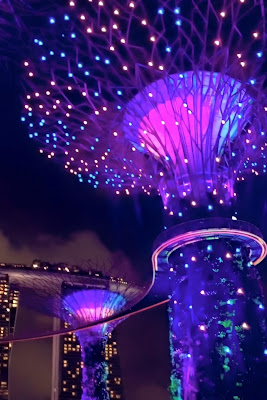 |
| The Supertree Grove seen at night |
The Merlion has been the icon of Singapore long before any of its modern landmarks were conceptualized. So seeing this statue is a separate must-do. The Merlion represents a mythical creature with a lion's head and a fish' body. It is widely used as the country's mascot and appears in a lot of souvenir items.
 |
| The Merlion |
4. Explore Sentosa Island
Sentosa Island, dubbed as the State of Fun, is an island located off the southern coast of Singapore's main island. It was formerly used as a military base but was redeveloped into a holiday island destination for both local and foreign tourists.
Today, the island is best known for its man-made beaches, lush rainforests, luxurious hotels, themed attractions, a cable car network, and the massive Resorts World Sentosa.
 |
| The massive Resorts World in Sentosa Island |
If you are looking for some world-class theme park fun, you're sure to find it in this tiny country. Located within Resorts World Sentosa, Universal Studios Singapore is Southeast Asia's first Hollywood movie theme park.
Occupying 20 hectares, the park guarantees cutting-edge rides, shows, and attractions based on blockbuster films and TV series. These include the Transformers The Ride, Revenge of the Mummy, Battlestar Galactica, Jurassic Park Rapids Adventure, Shrek 4D Adventure, and Sesame Street Spaghetti Space Chase.
 |
| Universal Studios' Battlestar Galactica: Human vs Cylon |
6. Take a Tour of the Night Safari
Singapore's Night Safari is the world's first nocturnal zoo. Unlike most nocturnal places, the Night Safari is open only at night, which means you can see the animals in their nocturnal habitats and going about their usual night time activities. The zoo houses more than 1,000 animals from over 100 species. The popular animals include the Asian elephant, Malayan tiger, hyenas, Asiatic lions, Malayan tapirs, flying squirrels, and wallabies.
A tour of the Night Safari makes a great night out for you, your family, and your friends.
7. Walk Around Chinatown and Little India
Singapore boasts a diverse and multicultural society. To experience its traditional and vibrant side, take a stroll along the streets of the ethnic enclaves of Chinatown and Little India. In these neighborhoods, you'll find many traditional houses, temples, and shops. You can also try their local food and delicacies.
 |
| A Hindu temple in Little India |
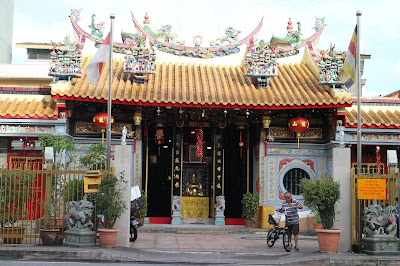 |
| A Chinese Temple in Chinatown |
All cities have their own popular shopping districts. In Singapore, Orchard Road takes that title. What was once a fruit orchard has grown into a bustling boulevard many consider as a shopping and dining paradise. It is lined with boutiques, shopping malls, hotels, and cafes.
 |
| The street sign in Orchard Road |
9. Jump Onboard a Cruise
Ideally located at the meeting point of sea routes, Singapore has established itself as a cruising hub. It is a great place from which to take off and explore the rest of Southeast Asia.
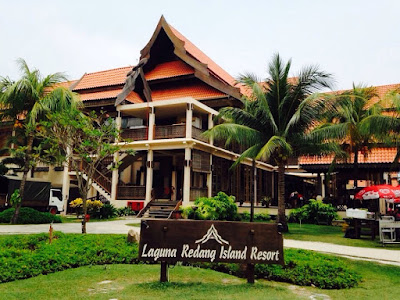 |
| Take a cruise from Singapore to neighboring island destinations |
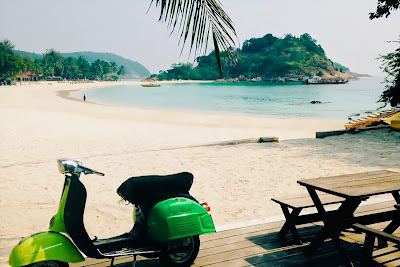 |
| The beautiful Redang Island in Malaysia |
There are literally thousands of food shops and restaurants in Singapore. Being a melting pot of various Asian cultures and a global financial center, you're sure to find food from all over the world in Singapore. It is truly an international food city.
 |
| Singapore's Hainanese Chicken Rice |
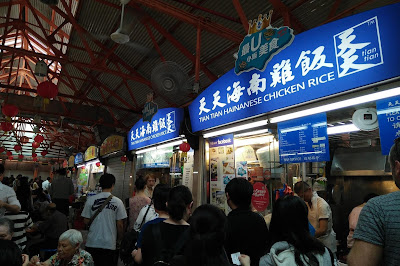 |
| A typical hawker center in Singapore |
Are you planning a trip to the Lion City? Leave your questions below and we'll try to help out. If you find this useful, please share on social media. Thanks!

No comments:
Post a Comment